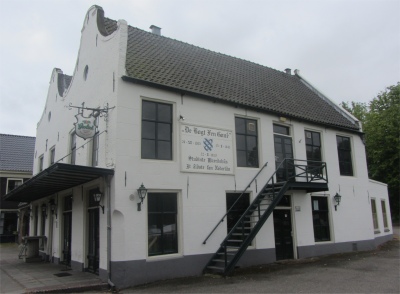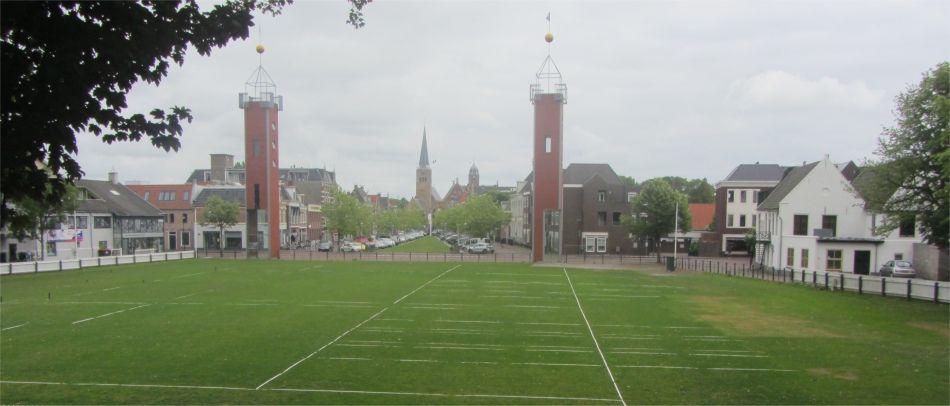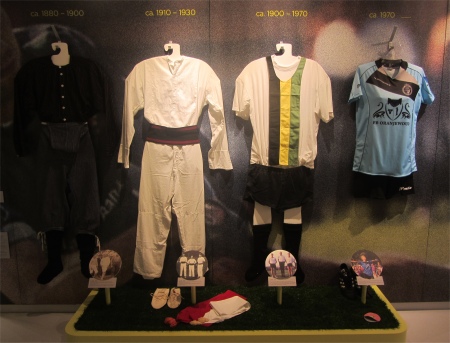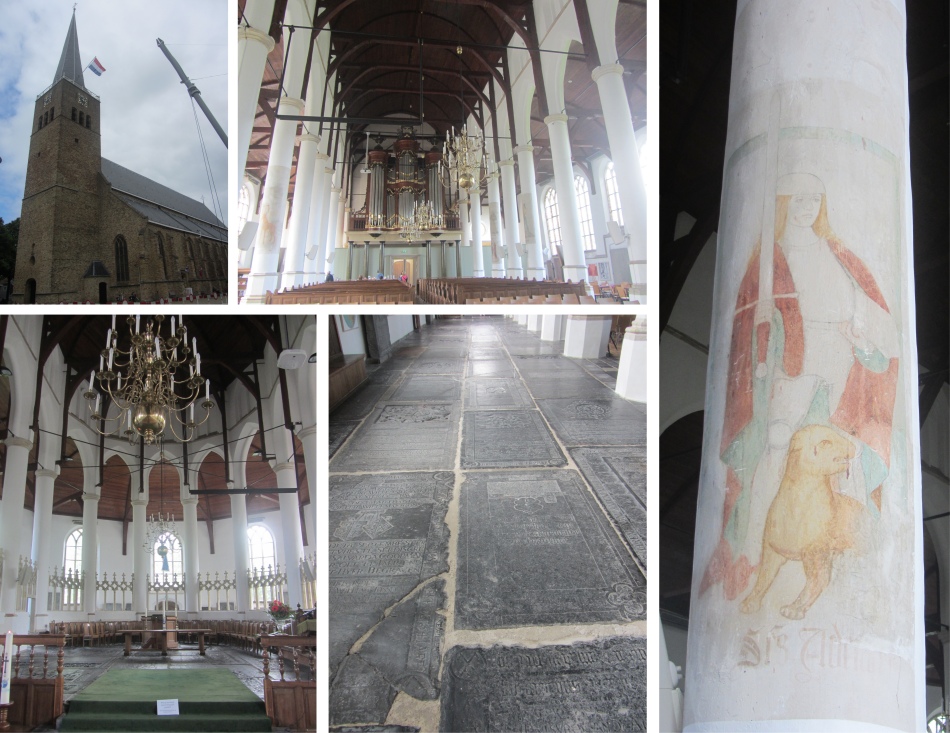 De Bogt fen Guné |
Franeker first appeared in the records in 1085; in the 12th century it was surrounded by walls and a moat; and it received a municipal charter in 1417. It is a charming little town with its ring of canals and its fine old buildings. Franeker is also noted for the Eise Eisinga Planetarium. A university, the second in the Netherlands, after Leiden, was founded in Franeker in 1585, making it the cultural centre of the north of the country. The most celebrated student of the Frisian Academy was the French philosopher Descartes. The university was dissolved by Napoleon in 1811 and was replaced in 1815 by an Athenaeum, which continued in existence until 1843. Franeker is also one of the historical eleven cities.
 Sjukelan with P.C. Towers Behind |
 Kaatsen Kit |
Heading back up Voorstraat we stopped off at the Keatsmuseum (Kaatsen Museum). Here an elderly couple enthusiastically showed us around their pride and joy. An ancient map showed how the roots of the sport had originated in northwest France, moved to Paris, and then moved north through Belgium and Flanders to Friesland, probably introduced by the movement of dyke builders to the north.
A large collection of memorabilia, together with videos and multimedia presentations described the sport's growth, its traditions, the rules of the sport, and its heroes. We could also have a go ourselves via a Wii system. One fascinating video showed how the 26gm balls were made, stuffed with horsehair and surprisingly hard. Ten out of ten to the elderly couple who bubbled with enthusiasm.
 Martinikerk, with a Column Depicting St. Adrian |
 Sign Outside Diakens Weeshuis (Orphanage) |
The overwhelming spaciousness of the church is probably created by the thirty slender columns between the aisles and the nave of the church. These thirty columns represent Devine perfection. The twelve columns round the choir stand for the tribes of Israel, and these in turn refer to the twelve apostles, with beautiful images of the saints painted on the columns. The Franeker St. Martin's church is the only church in Friesland with a choir aisle. Prior to the Reformation in 1580 the choir aisle was used for processions.
 Gable Top |
After tea at a cafe outside the church, we headed back to Harlingen. On arrival I went to pay the harbourmaster, explaining that there could be a possibility we may leave on Monday if the weather permitted. Wilhelm was a kind chap, gave us another free night and dropped the tourist tax; perhaps once we'd stayed here for a certain length of time we were no longer classified as tourists. Since he would not be here on Sunday, and we might not see him on Monday, he wished us both a safe journey and hoped that Rex's back would rapidly mend.
Keeping up the routine, we visited our usual watering hole, De Lichtboei. The customers greeted "the English". Crumbs, had we really been in this town that long? We ate in a Chine/Indonesian restaurant later, the food was delicious; I got my much needed chilli fix. The pretty Chinese girl who served us came from a town near Hong Kong. She was currently studying Human Technology in Holland. In essence, that is a very broad subject which attempts to supply technical solutions to human needs. She spoke fluent Dutch and English, I was most impressed.

